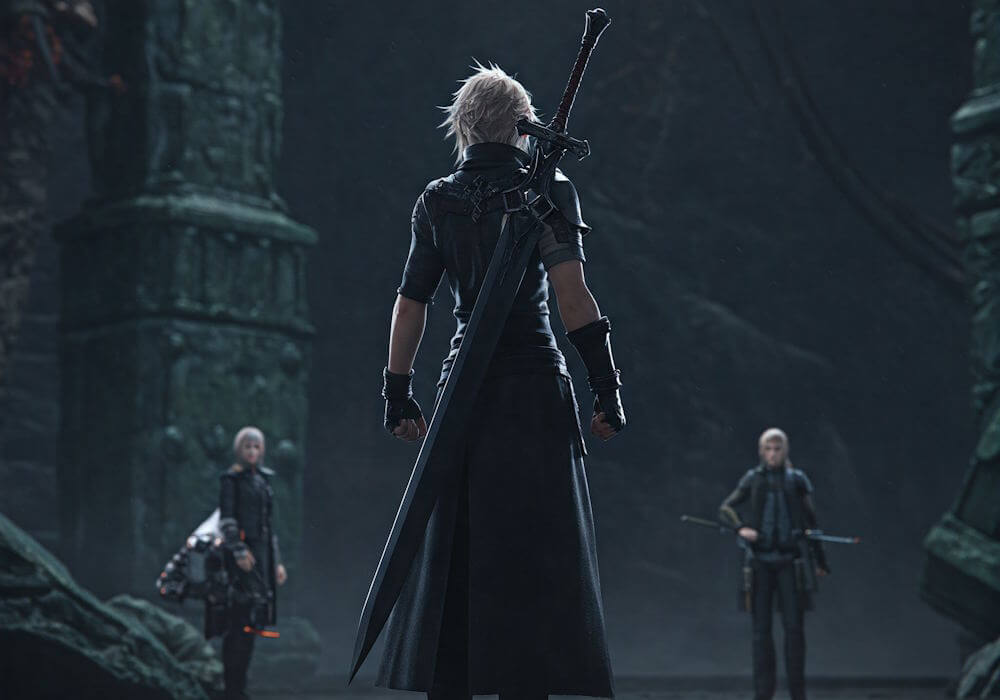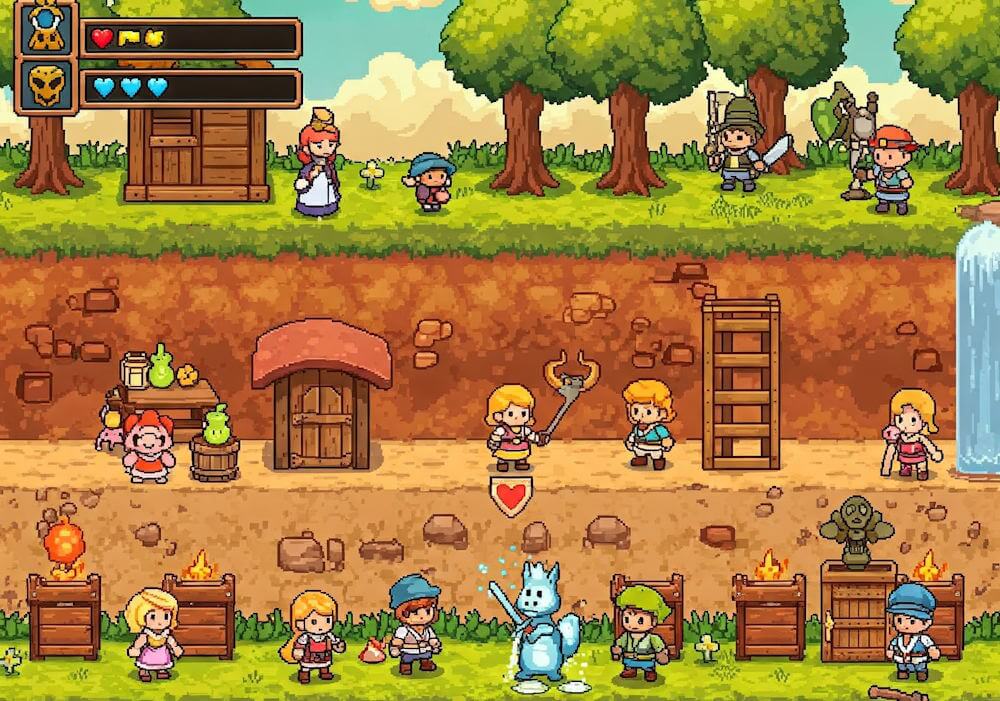Final Fantasy XVI, the latest installment in the critically acclaimed Final Fantasy franchise, marks an ambitious chapter in the series’ rich history. Developed by Square Enix, this entry has generated significant anticipation among both new players and seasoned fans, particularly due to its bold departure from some of the conventions that have defined previous titles. Initially announced during the PlayStation 5 showcase in September 2020, the game has undergone a notable evolution throughout its development, showcasing a commitment to innovation while respecting the franchise’s legacy.
At its core, Final Fantasy XVI delves into themes of power, conflict, and the socio-political turmoil that arises from the existence of magical beings known as Eikons. Set in the land of Valisthea, the narrative unfolds in a world divided by crystals that possess incredible power, thus setting the stage for both internal and external struggles among different factions. The game’s protagonist, Clive Rosfield, navigates a turbulent landscape where destinies intertwine and disasters loom, underscoring the emotional depth that fans have come to expect from the series.
One of the most talked-about features of Final Fantasy XVI is its shift toward a more action-oriented combat system, which marks a departure from the turn-based mechanics that have historically characterized the franchise. The development team aims to strike a balance between exhilarating gameplay and the deep storytelling that is synonymous with Final Fantasy. By embracing this hybrid approach, developers hope to entice a wider audience while ensuring that long-time fans still find elements that resonate with their love for the franchise.
As release approaches, expectations are high. The blend of traditional elements with fresh ideas has sparked conversations regarding whether Final Fantasy XVI can reclaim the standing of the series in the gaming community. Its significance is not merely about being another title in the lineup; rather, it represents an opportunity for reinvention while honoring the memories of past games that have captivated millions.
Historical Context of the Final Fantasy Series
The Final Fantasy franchise, developed and published by Square Enix, has been a cornerstone of the role-playing game (RPG) genre since its inception in 1987. The first title introduced players to a fantasy world filled with magic, memorable characters, and an intricate narrative structure, setting the bar for future RPGs. Each subsequent entry brought innovation, whether through groundbreaking graphics, expansive open worlds, or complex storytelling, which collectively shaped player expectations and industry standards.
Notably, Final Fantasy VII, released in 1997, marked a significant turning point. With its transition to 3D graphics and an emotionally charged narrative, this title not only garnered immense popularity but also reached audiences beyond traditional gaming communities. The tactical turn-based system and rich character development became hallmarks of the series, influencing numerous successors in both genre and gameplay design.
As the series progressed into the 2000s and beyond, titles such as Final Fantasy X and Final Fantasy XIV showcased the franchise’s willingness to experiment. Final Fantasy X introduced voice acting and a more linear storytelling approach, while Final Fantasy XIV’s problematic launch led to a complete overhaul, culminating in the critically acclaimed “A Realm Reborn.” This latter title’s success reflected the franchise’s resilience and adaptability, qualities that fans have come to expect from Final Fantasy games.
However, the release of Final Fantasy XV highlighted a shift towards open-world exploration and more action-oriented combat, prompting a divide among longstanding fans about the series’ direction. As new titles emerge, there is an ongoing conversation regarding whether they pay homage to their storied past or venture into uncharted territories. This historical context establishes a foundation upon which players can assess whether Final Fantasy XVI marks a genuine return to form or is merely another step in the franchise’s enduring evolution.
Gameplay Mechanics and Innovations
Final Fantasy XVI represents a notable evolution in gameplay mechanics, departing from some established conventions while still maintaining the essence of prior entries in the franchise. One of the most significant changes is the overhaul of the battle system. Unlike the traditional turn-based combat that has been a hallmark of the series, this installment adopts an action-oriented approach, reminiscent of games such as Devil May Cry and Nier: Automata. Players engage in real-time battles, utilizing a combination of physical attacks, magical abilities, and evasive maneuvers. This shift promises to deliver a more dynamic and engaging experience, catering to players who favor fast-paced gaming.
Character development in Final Fantasy XVI also showcases an innovative approach. The game focuses on a single protagonist, Clive Rosfield, whose journey differs significantly from the ensemble casts typical of earlier titles. This design choice allows for a deeper exploration of Clive’s narrative arc, as players witness his growth and the consequences of his choices throughout the storyline. Additionally, the character progression system offers new mechanics, such as skill trees and active abilities, enabling players to customize their combat style and develop characters in a more personalized manner.
Furthermore, Final Fantasy XVI introduces several new gameplay elements that enhance overall immersion. The incorporation of Eikon battles, where large summoned creatures engage in dynamic confrontations, adds a strategic layer to gameplay. These segments combine epic scale with intricate mechanics, requiring players to master their chosen Eikon’s unique abilities in order to navigate challenges effectively. This seamless blend of cinematic storytelling and engaging gameplay helps to reinforce the franchise’s identity while experimenting with fresh ideas. As a result, players are likely to appreciate the balance between nostalgia and innovation that Final Fantasy XVI brings to the table.
Narrative and Character Development
Final Fantasy XVI presents a narrative structure that seeks to blend traditional themes with modern storytelling techniques, offering players an engaging experience that resonates with both newcomers and long-time fans of the franchise. The story is set in the realm of Valisthea, a land blessed by the light of Mothercrystals and plagued by conflict among its nations. This backdrop serves as an excellent canvas for exploring the intricate personal journeys of its characters, particularly Clive Rosfield, the protagonist, who navigates the complexities of duty, revenge, and identity.
Character development in Final Fantasy XVI is notably deeper than in some previous installments of the series. Clive’s journey from a young noble to a hardened warrior reflects the classic hero’s journey but is enriched with moral ambiguity and personal sacrifice. His relationships with other characters, especially his younger brother, Joshua, and the enigmatic Dominants, further communicate the game’s exploration of familial ties and the consequences of power. These character arcs are woven into a narrative tapestry that illustrates the impact of shifting allegiances and the burdens borne by those who seek to protect their loved ones.
Throughout the game, themes such as loyalty, sacrifice, and the nature of good and evil are prevalent, mirroring the moral complexities often found in earlier titles of the series. Compared to earlier Final Fantasy games, which often featured clearer dichotomies between heroes and villains, XVI leans into a more nuanced portrayal of characters. For instance, the motivations of antagonists are revealed to be as compelling as those of the protagonists. This subtle shift in storytelling allows the player to explore not just the external conflicts among the nations of Valisthea but also the internal struggles of its characters, creating a rich narrative that echoes the spirit of previous titles while pushing the boundaries of the franchise’s storytelling.
Visuals and Art Direction
The visual presentation and art direction of ‘Final Fantasy XVI’ mark a significant evolution in the franchise, showcasing a blend of cutting-edge graphics and a meticulously crafted artistic style. The transition to a more realistic aesthetic aligns with contemporary gaming trends while still honoring the series’ rich heritage. Characters are designed with intricate detail, reflecting a broad palette of emotional depth and individuality, which enhances player engagement and immersion.
One of the standout features of the game is its stunning graphics, powered by advanced technology that showcases breathtaking landscapes and dynamic environments. Each location within the game is designed with careful consideration to both functionality and immersion, inviting players to explore vast, intricately detailed realms. From lush forests to imposing castles, the world-building in ‘Final Fantasy XVI’ feels both expansive and intimate, offering a seamless integration of gameplay and visual storytelling.
The character design in ‘Final Fantasy XVI’ also deserves commendation. Drawing from a multitude of influences, designers have crafted characters that are not only visually striking but also forged with rich backgrounds and motives. The differentiation between characters is pronounced, with unique styles that reflect their personalities and roles within the narrative. This attention to detail in character development contributes to the overall atmosphere of the game, allowing players to forge stronger connections with the cast.
Moreover, the art direction effectively incorporates various aesthetic conventions of the franchise while simultaneously redefining them. The incorporation of medieval and fantastical elements results in a unique visual experience that feels fresh yet familiar. This balance between continuity and innovation is crucial in maintaining the identity of ‘Final Fantasy’ while appealing to new and returning players alike. The art direction, combined with the immersive graphics, establishes a compelling visual narrative that supports the emotional weight of the game’s storytelling.
Community Reception and Critiques
The release of ‘Final Fantasy XVI’ has generated considerable discussion within the gaming community, eliciting a wide range of responses from both players and critics alike. Upon its launch, the game was met with initial enthusiasm, particularly for its graphics and combat mechanics, which many hailed as a significant leap forward for the franchise. Players praised the cinematic quality of the storytelling, highlighting its mature themes and character development, which they felt marked a bold departure from previous entries in the series. This shift has attracted both veteran fans of the franchise and newcomers drawn in by the sophisticated narrative and visual presentation.
However, not all feedback has been overwhelmingly positive. Some longtime fans voiced their disappointment regarding certain gameplay elements that diverged from the series’ traditional role-playing foundations. Concerns were raised about the linearity of the gameplay experience, as many players expected a more open-world structure reminiscent of earlier titles. Critics pointed out that while ‘Final Fantasy XVI’ excels in specific areas, it appears to sacrifice some of the franchise’s depth in character customization and exploration in exchange for a more streamlined experience. This juxtaposition between innovative mechanics and traditional expectations has sparked debates within the gaming community.
User reviews on forums and social media platforms reveal a tapestry of opinions, revealing that while many revel in the new direction the franchise has taken, others mourn aspects they perceive as lost. Notably, discussions frequently center around the character dynamics and the emotional weight of the narrative, as well as the overall pacing of the story. As the broader player base continues to engage with the game, the community reception remains dynamic, reflecting the diverse preferences and expectations held by fans of ‘Final Fantasy’. This continuous dialogue underscores the franchise’s ability to invoke passion and strong opinions across its diverse audience.
Soundtrack and Audio Experience
One of the most distinctive features of the Final Fantasy franchise is its captivating soundtrack, crafted meticulously to enhance narrative and emotional depth. In Final Fantasy XVI, the audio experience is no exception. Composed by Masayoshi Soken, the score encompasses a diverse range of musical themes that evolve alongside the game’s story and characters, establishing an immersive atmosphere that resonates with players. Soken’s work, characterized by a blend of orchestral and electronic elements, not only reflects the world of Valisthea but also intensifies the emotional stakes at crucial plot points.
The soundtrack employs recurring motifs that parallel key narrative developments, creating a sense of continuity as players navigate through the complexities of power, betrayal, and sacrifice. The use of melodies that embody character arcs contributes to a deeper understanding of their motivations, fostering a more profound connection with the audience. This technique mirrors previous installments in the franchise, where musical themes often echoed pivotal moments and character transformations. Iconic scores from earlier titles, such as Nobuo Uematsu’s work in Final Fantasy VII, set a high standard, utilizing themes intertwined with significant gameplay events to leave an indelible mark on players long after they’ve finished the game.
In contrast, while previous entries generally featured lush orchestration, Final Fantasy XVI embraces a modern and slightly avant-garde soundscape. This shift not only aligns with contemporary gaming trends but also introduces fresh interpretations of familiar musical styles within the series. The audio experience is enhanced by high-quality voice acting and ambient sound design, further immersing players in the fantastical realm. This dedication to creating an evocative sound environment speaks volumes about the game’s commitment to storytelling, reflecting the ever-evolving nature of the franchise while maintaining the core essence recognized by long-time fans.
Final Thoughts: A Return to Form?
The release of Final Fantasy XVI has reignited discussions surrounding the franchise’s trajectory and evolution. With a focus on both gameplay mechanics and immersive storytelling, many fans and critics alike are evaluating whether the latest installment truly signifies a return to form for the series. The gameplay shifts towards a more action-oriented style serve as a departure from the turn-based systems that the franchise is traditionally known for, yet this modernization has been embraced by a substantial segment of the audience, eager for a fresh experience.
When considering narrative depth, Final Fantasy XVI excels by integrating rich lore and character development, which are crucial elements that resonate with longtime fans. The storytelling is bolstered by compelling characters and complex moral dilemmas, reminiscent of earlier entries that captured the hearts of players. The development team’s efforts to blend traditional storytelling elements with new mechanics provide an engaging context for both new players and veterans of the franchise.
Graphically, the game pushes the boundaries, showcasing breathtaking visuals that elevate its storytelling. The high production values contribute to an immersive experience that feels consistent with modern gaming standards. Fan reception has been largely positive, highlighting this installment’s art direction and cinematics as pivotal reasons for the game’s praise. Furthermore, community feedback indicates a desire for a fusion of the old and new, suggesting that the balance struck in Final Fantasy XVI may have successfully catered to various expectations.
In conclusion, while Final Fantasy XVI diverges from some established conventions, many elements reflect a promising return to form by focusing on captivating gameplay, a rich narrative landscape, and a visual experience that honors the franchise’s legacy. The reception indicates that this installment has the potential to bridge generational gaps, making it a significant entry in the series. Whether this marks a definitive return to form or not, it undeniably showcases the franchise’s continual evolution and adaptability in an ever-changing gaming landscape.
Looking Ahead: The Future of Final Fantasy
The success of ‘Final Fantasy XVI’ heralds a pivotal moment for the franchise, with intriguing possibilities for sequels and spin-offs that can extend its rich narrative and gameplay appeal. Should ‘Final Fantasy XVI’ achieve significant commercial success and critical acclaim, it is likely that Square Enix will capitalize on this momentum, potentially developing direct sequels that explore deeper character arcs and continue the acclaimed storylines introduced in this installment. Additionally, spin-offs may emerge, drawing on secondary characters or unique aspects of the game world, which could diversify the franchise even further.
Moreover, as the gaming market evolves, the integration of traditional elements with modern gaming mechanics presents an opportunity for the Final Fantasy series to adapt. The franchise has always been known for its innovation, and moving forward, incorporating real-time combat systems, open-world exploration, and engaging narrative experiences could resonate well with both veteran fans and newcomers alike. The balancing act between honoring the legacy of previous titles, such as turn-based combat and expansive narratives, while introducing contemporary gameplay styles, will be crucial in shaping the future of the franchise.
Furthermore, the anticipated reception of ‘Final Fantasy XVI’ may influence the overall direction of future Titles. A favorable response could lead to bolder storytelling, alongside a commitment to pushing the boundaries of technology to enhance visual fidelity and world-building. Additionally, acknowledging the increasing trends towards multiplayer elements could inspire Square Enix to develop collaborative or interconnected experiences in future games. Thus, the horizon appears promising for the Final Fantasy franchise, with a narrative and gameplay evolution that honors its illustrious history while paving the way for modern interpretations that engage and captivate a diverse gaming audience.




